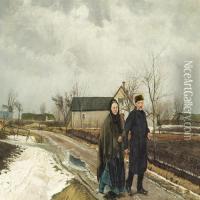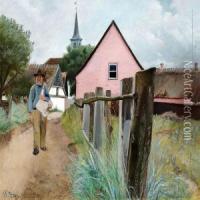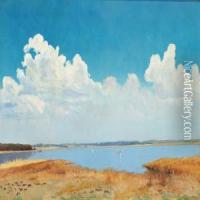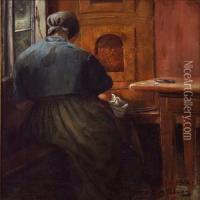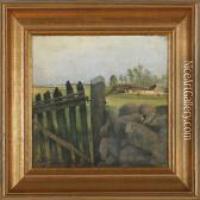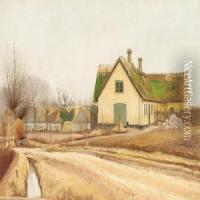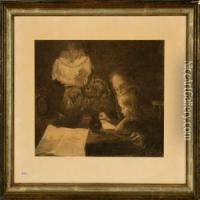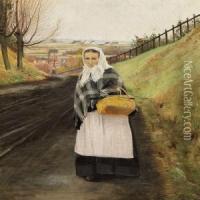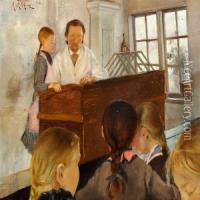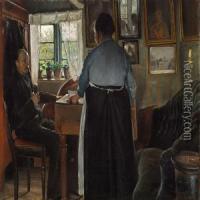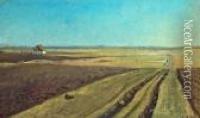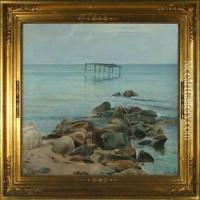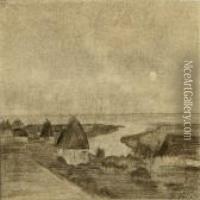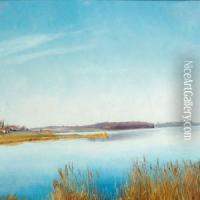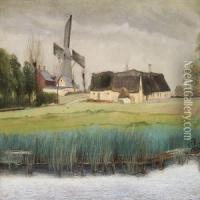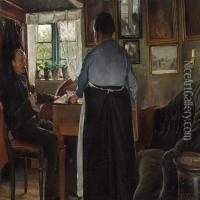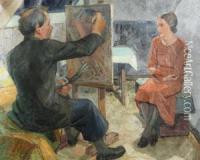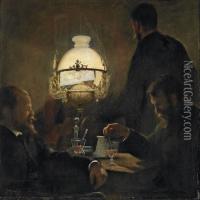L.A. Ring Paintings
Laurits Andersen Ring, commonly known as L.A. Ring, was a Danish painter who became one of the foremost figures in the Symbolist and Realist movements in Denmark. Born on August 15, 1854, in the village of Ring in southern Zealand, Denmark, Ring's early life in a rural setting influenced much of his later work. Despite his humble beginnings, his artistic talent was evident from an early age.
After initial training at a technical school, where he was taught drawing, Ring enrolled at the Royal Danish Academy of Fine Arts in Copenhagen in 1875. He studied there for nearly six years, honing his skills and exploring different aspects of painting. During his time at the academy, he was heavily influenced by the works of the Danish Golden Age, particularly the landscape paintings of artists such as Christen Købke and P.C. Skovgaard.
Ring's own style evolved over the years, from a traditional realistic approach to incorporating more symbolist elements, often reflecting the existential concerns of modern man. His work frequently depicted the lives of the Danish peasantry, the struggles and hardships of rural life, and the encroachment of industrialization on the natural and traditional world.
One of Ring's most iconic works is 'Road in the Village of Baldersbrønde (Winter Day)' from 1912, which showcases his characteristic use of light and shadow to create mood and atmosphere. Another notable work is 'At Breakfast' from 1898, which captures the simple domestic life of a peasant family through delicate lighting and intimate composition.
Throughout his career, L.A. Ring was awarded several honors, including the Eckersberg Medal in 1888 and the Thorvaldsen Medal in 1893. He also became a member of the Royal Academy in 1914. Ring continued to paint and exhibit his works until his death on September 10, 1933, in Sankt Jørgensbjerg, leaving behind a legacy that significantly shaped Danish art in the late 19th and early 20th centuries.
